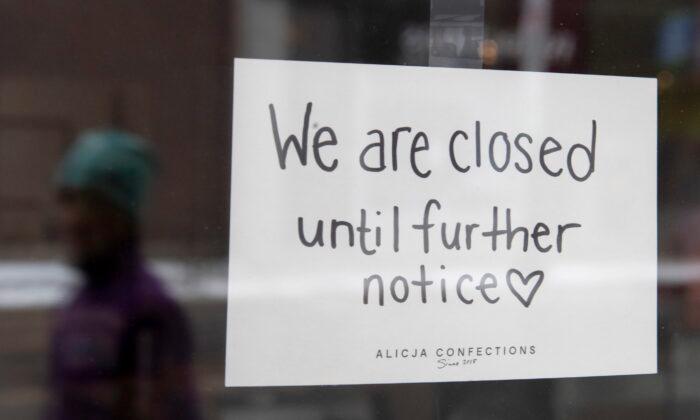The permanent closing of more than 120,000 small and medium-sized businesses can be directly linked to the COVID-19 pandemic lockdowns of 2020, according to a newly released government report.
“This is a decrease of two percentage points compared with the year 2019,” said the report Key Small Business Statistics, which was first obtained by Blacklock’s Reporter.
The report counted 1,216,550 businesses across Canada in 2023 compared to 1,226,454 in 2020, but said the number of permanent business closures was partly offset by new startups.
Between 2020 and 2023, however, the department counted a net loss of 10,100 retailers, 2,700 restaurateurs and hoteliers, and 3,800 wholesalers.
“An increase or decrease in the number of businesses is the net result of the appearance or disappearance of businesses over a given period,” the report said. “This is often referred to as ‘creative destruction.’”
The number of small businesses increased every year between 2001 and 2020 except for in 2013, 2016, and 2020, when more businesses disappeared than were created, the government report said.
Private sector employment declined in Alberta, Saskatchewan, Québec, Nova Scotia, New Brunswick, and Newfoundland and Labrador between 2020 and 2023, according to the report. Across the country, the private-sector payroll decreased from 12,303,500 workers to 12,214,400, representing a 89,100 dip in jobs.
“The COVID-19 pandemic posed significant challenges to the Canadian economy,” said the report. “The resulting economic contraction significantly impacted employment.”
A total of 128,043 bankruptcies were filed in 2023 according to the Superintendent of Bankruptcy, just 30,000 below the peak of 158,000 filings during the 2008 global financial crisis.
Superintendent of Bankruptcy Elisabeth Lang told the Commons finance committee at a 2020 hearing that insolvency—the inability to pay off debt—“is a lagging indicator.”
“Our historical data shows there will be an increase but I don’t think it will be sudden,” Ms. Lang said in her testimony.
The Canadian Federation of Independent Business (CFIB) earlier cautioned insolvency figures did not fully show the extent of damage caused by the pandemic.
“In my view there are hundreds of thousands of zombie businesses, businesses that are essentially dead but haven’t finalized the closure process altogether. They have a paper sign saying, ‘Temporarily Closed,’” CFIB CEO Dan Kelly, told the Senate national finance committee during a 2020 hearing.
“We are going to see those businesses now formally fail, more boarded-up signs,” he said. “Our research shows one in seven businesses will fail.”







